Cheap vs Expensive Factors
Are Expensive Factors More Risky?
May 2020. Reading Time: 10 Minutes. Author: Nicolas Rabener.
SUMMARY
- Factors can be valued like stocks
- Factor valuations have not changed structurally over the last 30 years
- Cheap factors outperformed expensive ones on average
INTRODUCTION
Tesla (TSLA) breached the $100 billion market capitalization in January 2020 and became the most valuable car manufacturer globally. However, valuing the company is challenging given the growth profile, complexity of the business, and erratic CEO. It is not yet profitable and cashflow is negative, which means that traditional valuation metrics based on historical data are currently less applicable to Tesla.
Investors could consider that Tesla sold less than 400,000 cars in 2019, compared to more than 6 million for Volkswagen (VW), which is valued at $87 billion. Tesla might seem extraordinarily expensive from this perspective, but that is similar to previous years.
Tesla and a few similar names like Netflix represent the antithesis of value investing and have been defying the expectations of most investors, especially of short-sellers. However, there is still very little research that encourages buying expensive stocks, despite the lost decade in value investing since the global financial crisis in 2009. Research continues to support the Value factor, which has been validated in equity markets globally as well as across asset classes in recent years.
Investors hoping for a recovery in value investing could apply a valuation-based approach to the factor itself, but there is limited research in this area.
In this short research note, we will explore equity factors and valuations.
FACTOR VALUATION SPREADS
Factors can be valued like stocks based on fundamental metrics. We calculate the average price-to-book multiples of the long and short portfolios of common equity factors as well as the difference between those, which is termed the valuation spread. The higher the spread, the more expensive a factor is from a valuation perspective (read Measuring Factor Crowding via Valuations).
It is worth highlighting that factors exhibit structurally different valuation spreads. The Value factor has a negative spread per definition as the long portfolio contains stocks trading at cheap valuations while the short portfolio is comprised of expensive stocks with high multiples. Other factors like Momentum or Quality feature positive spreads on average.
The analysis below highlights the valuation spreads from 1998 to 2018 as well as for each of the decades for six common equity factors, which are defined in line with academic and industry standards. Despite the US equity market experiencing various boom-and-bust cycles during the last 30 years, the average spreads for each factor were approximately comparable across the decades.
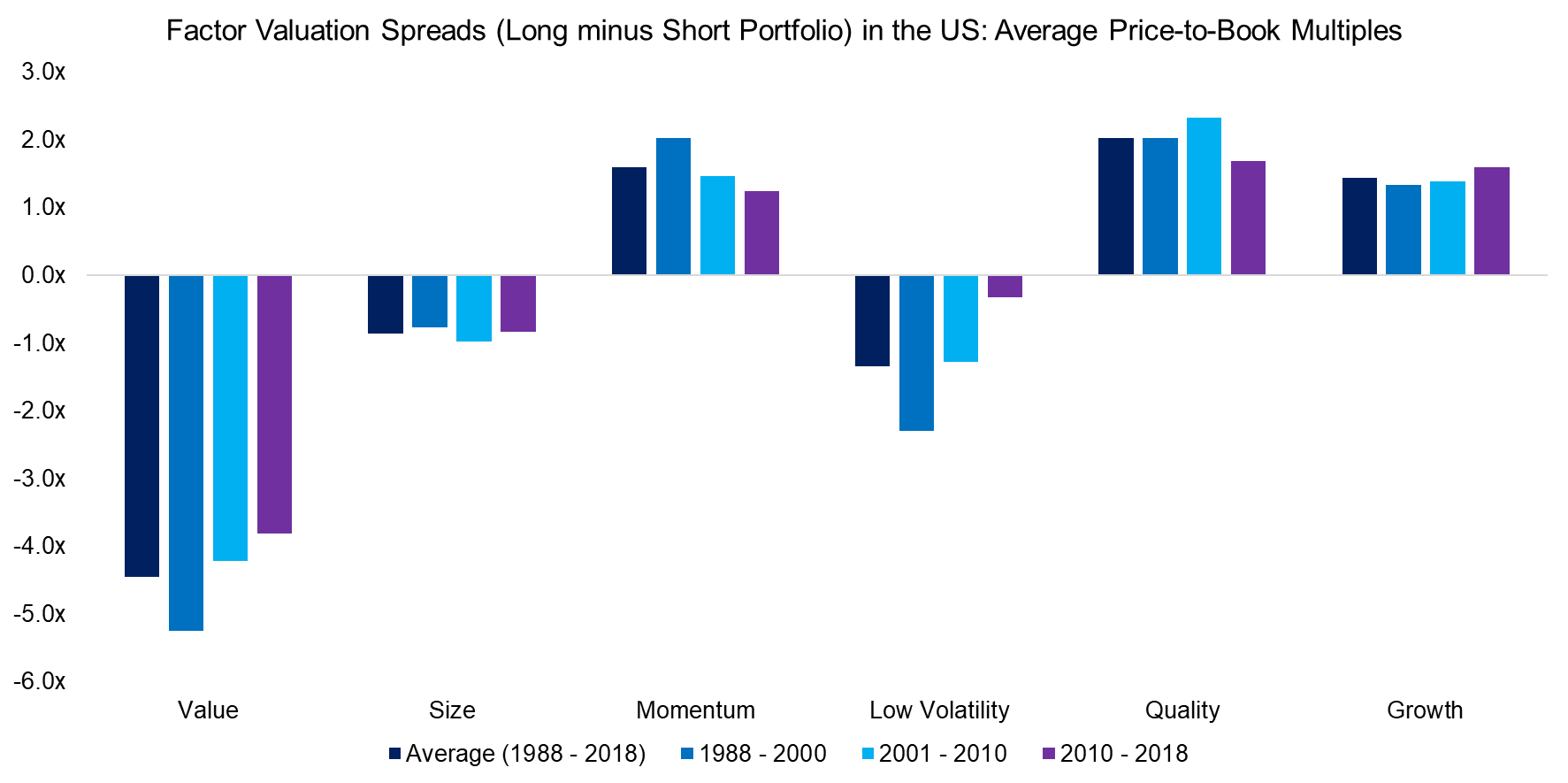
Source: FactorResearch
FACTOR VALUATIONS & EXPECTED RETURNS
We split the valuation spread time series covering the period from 1988 to 2018 into quintiles that represent different valuation categories ranging from most expensive to cheapest. Each of these categories contains approximately the same number of data points. We then measure the 3-year forward returns on a daily basis and aggregate the results.
The analysis highlights that the subsequent performance was higher when the factor was trading at a cheap valuation than at an expensive one in the US stock market. It is an almost linear relationship for all factors, except for Size and Momentum.
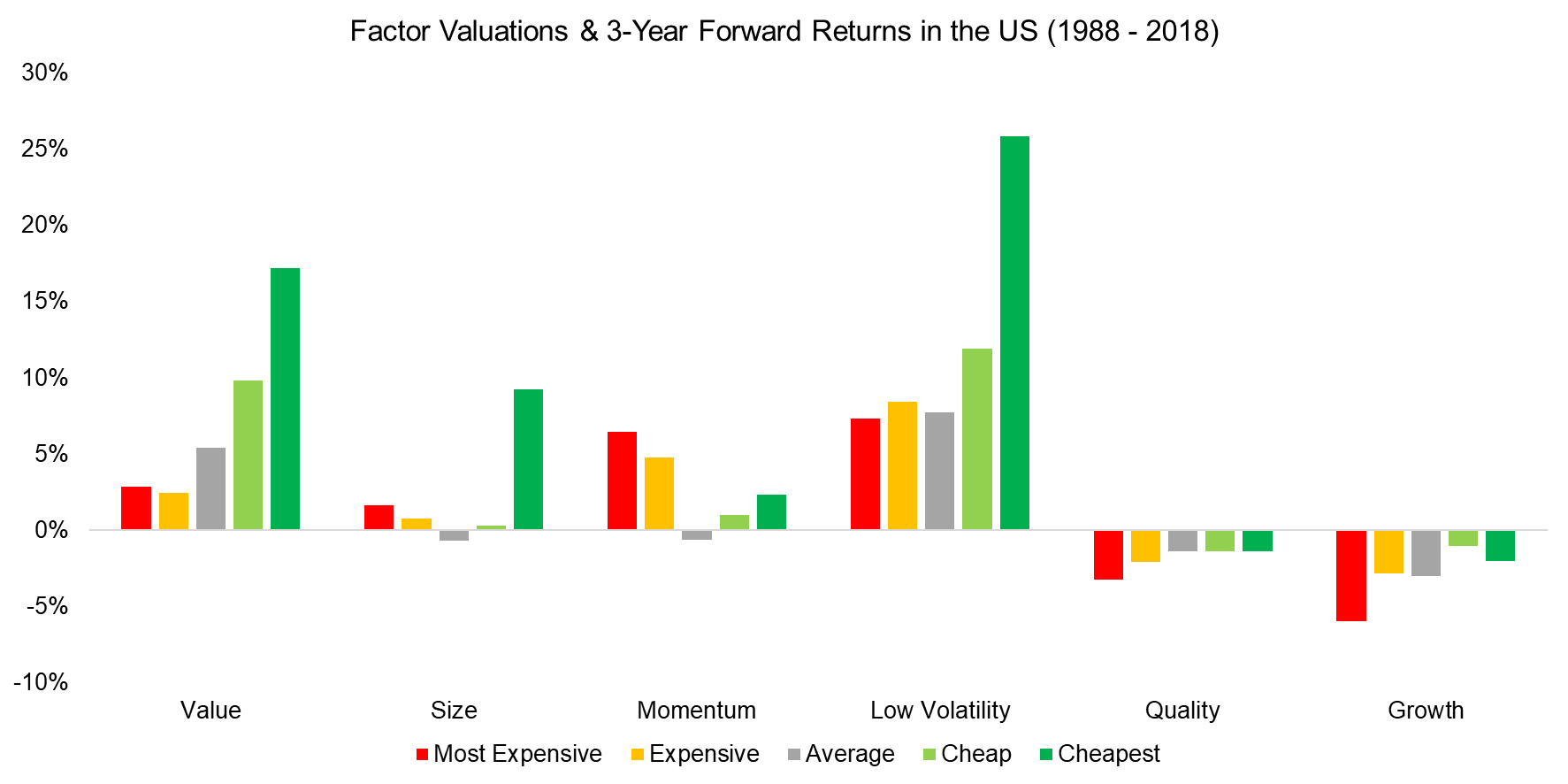
Source: FactorResearch
We replicate the analysis in the European stock market, which provides a less homogenous perspective. The factor valuation mattered for Value, Momentum, and Growth, but seemed less meaningful for other factors.
Factor performance in Europe and globally is correlated and investors behave similarly, so there are few arguments why a valuation-based approach should have been less effective than in the US.
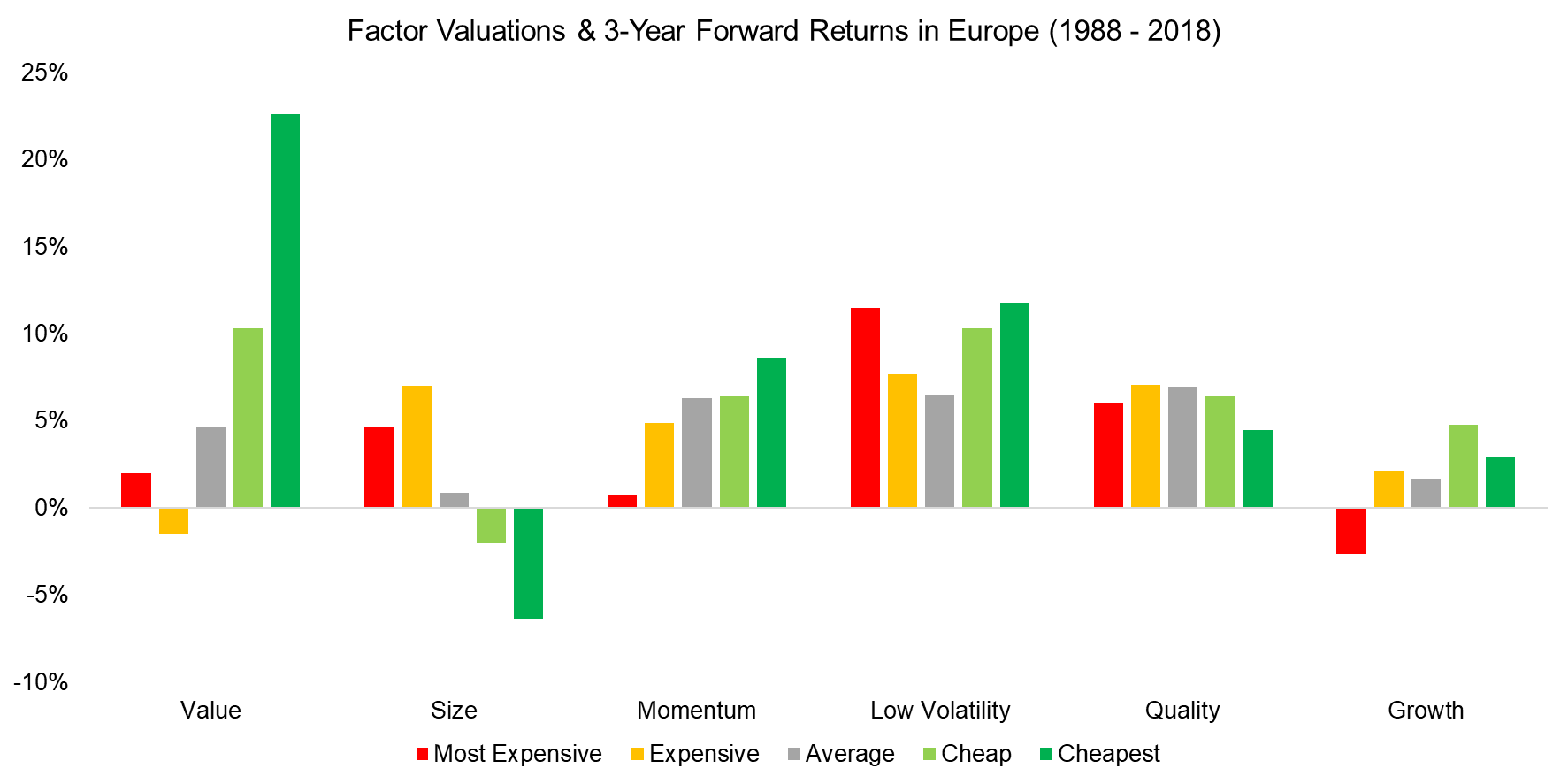
Source: FactorResearch
Similar to the results in the US stock market, in Japan, a cheaper factor valuation led to higher returns than an expensive one for the majority of factors. Some literature highlights that certain factors like Momentum performed worse in Japan than in the US or Europe, but typically also expresses strong support for the Value factor and other mean-reversion strategies, which should provide fertile grounds for investors contrasting between cheap and expensive factors (read Death, Taxes and Mean-Reversion).
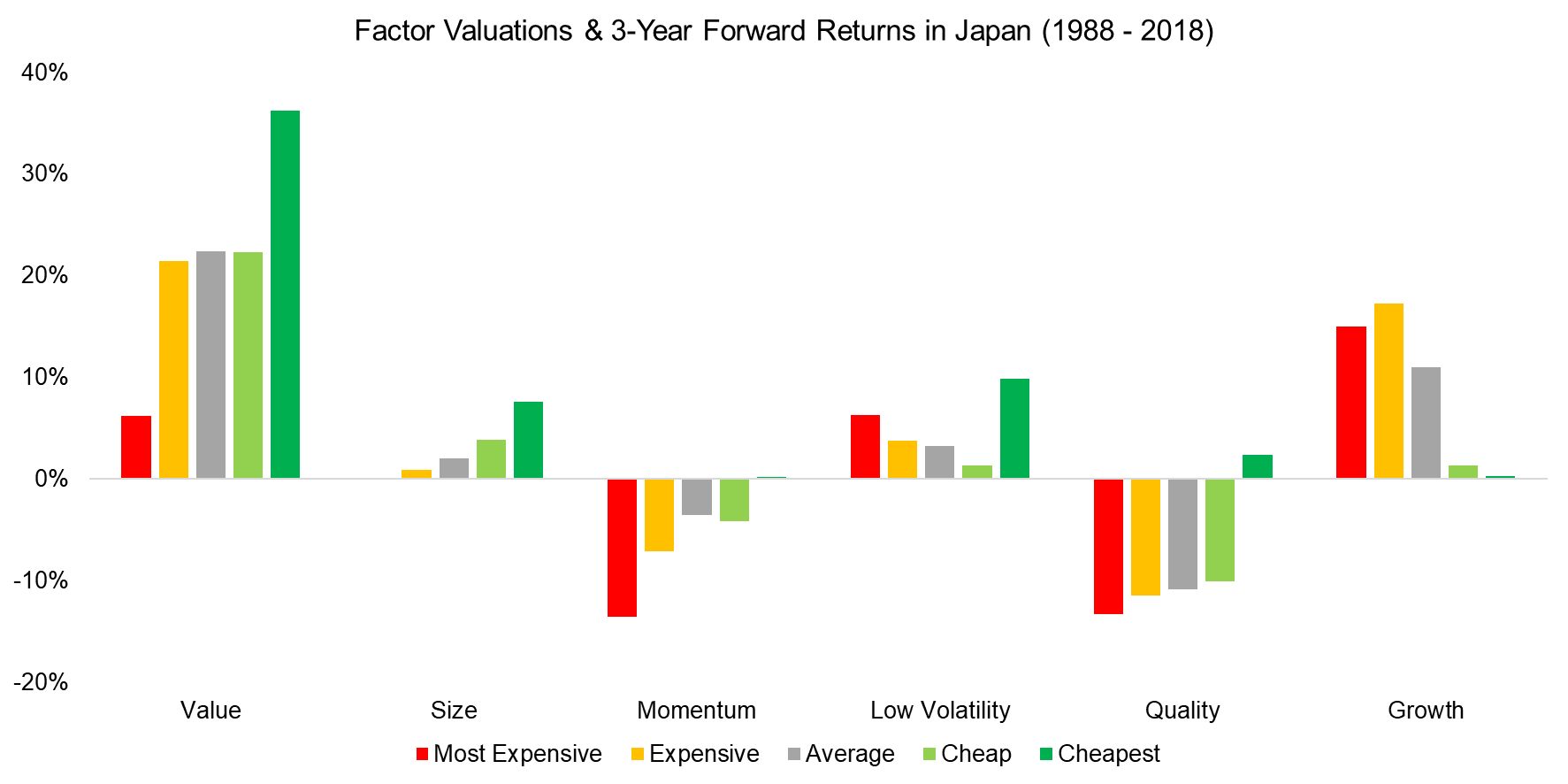
Source: FactorResearch
CHEAP VS EXPENSIVE FACTORS
Finally, we aggregate the results from all regions and calculate the difference in returns when valuations were the cheapest and most expensive. We observe that the valuation-based approach to factor investing has only led to consistently positive returns across the regions for the Value factor. However, although there is less consistency across the other factors, it was effective on average.
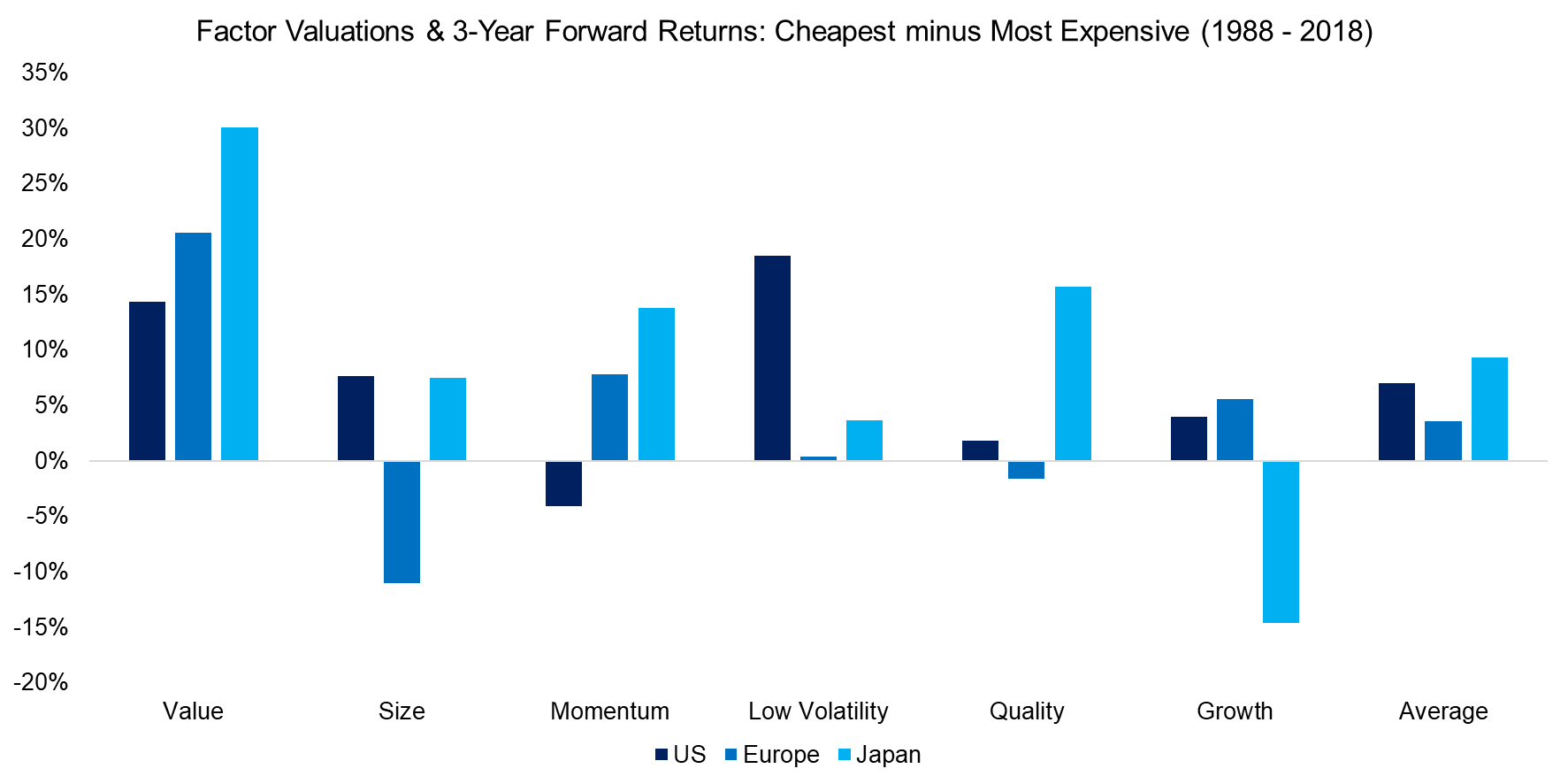
Source: FactorResearch
Although we have established that the valuation spreads have not changed structurally over the last three decades, it might be that the positive returns from buying factor exposure when trading cheaply and selling when expensive could be largely attributed to a certain time period.
Using the Value factor in the US as a case study, we analyze the valuations and subsequent returns per decade between 1988 and 2018. The results highlight that the valuation-based approach to factor investing worked relatively consistent across time. The most significant period was between 2001 and 2010, which includes the implosion of the tech bubble. Cheap stocks like Berkshire Hathaway significantly outperformed expensive stocks like Pets.com or Webvan, generating large returns for the Value factor.
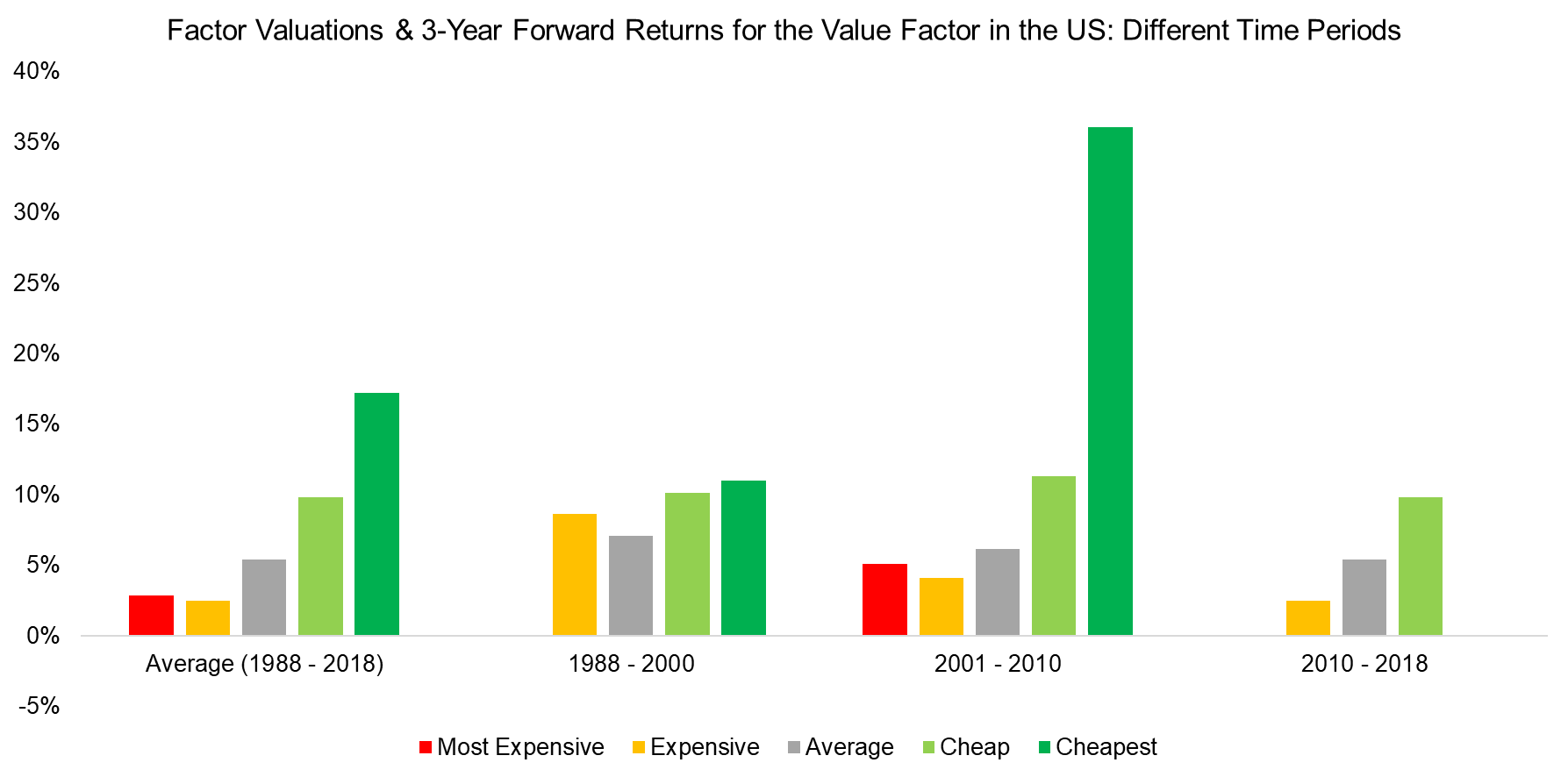
Source: FactorResearch
FURTHER THOUGHTS
Despite these positive results, allocating to factors based on their valuations is unlikely attractive on a stand-alone basis. The core issue is that the framework requires investors to have zero exposure to certain factors for multiple years when they are trading expensive to very expensive, which would demand extreme discipline. Especially given that some factors like Low Volatility generated positive returns across regions even though the factor was trading at high valuations.
However, a valuation-based framework to factor investing can be integrated into a multi-metric approach to factor risk management, which is more sensible as well as a more robust approach.
RELATED RESEARCH
Timing Low Volatility with Factor Valuations
ABOUT THE AUTHOR
Nicolas Rabener is the CEO & Founder of Finominal, which empowers professional investors with data, technology, and research insights to improve their investment outcomes. Previously he created Jackdaw Capital, an award-winning quantitative hedge fund. Before that Nicolas worked at GIC and Citigroup in London and New York. Nicolas holds a Master of Finance from HHL Leipzig Graduate School of Management, is a CAIA charter holder, and enjoys endurance sports (Ironman & 100km Ultramarathon).
Connect with me on LinkedIn or X.

